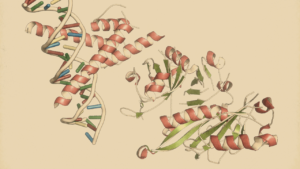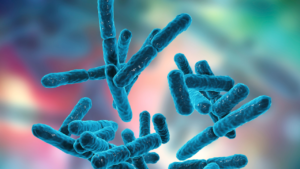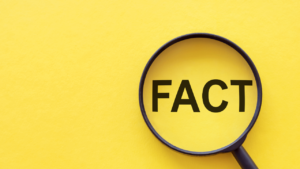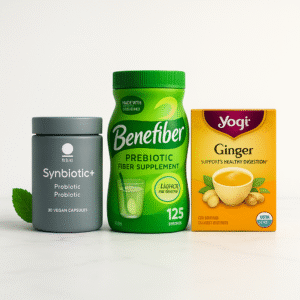Unveiling the Powerful Benefits of Zinc and High-Zinc Foods
Discover how zinc and high-zinc foods can help you achieve a balanced life. Learn the benefits of zinc and which foods that contain zinc to help you reach your health goals.
High zinc foods

Discover how zinc and high-zinc foods can help you achieve a balanced life. Learn the benefits of zinc and which foods that contain zinc to help you reach your health goals.
Zinc is a necessary element for living things and their functions 14. Our bodies can't store it, so it's important to regularly include it in our diet.
Zinc is important for more than 300 enzymes and plays a role in cell communication, growth, and survival. It also helps keep the immune system healthy and can be connected to health problems when there is not enough zinc and inflammation in the body.
Understanding Zinc
Zinc is classified as a trace element in the human body, however, it is naturally found in the Earth's crust at a proportion of approximately 0.02% and ranks 23rd in terms of abundance among all elements.
In human blood serum, the typical amount of zinc is around 800 ± 200 μg/dL, whereas in urine (over a 24-hour period), it ranges from 109 to 130 μg/dL, and is generally less than 500 μg/dL 1.
In an adult body, the typical quantity of Zn is approximately 1.4 to 2.3 grams 2, 3, 4, 5.
After iron, zinc is the second most abundant transition metal ion found in living organisms. However, if we exclude iron that is bound to hemoglobin, then zinc becomes the most abundant transition metal 6.
Zinc is a special metal that helps over 300 enzymes work properly 7. Its main job is to keep the shape of many proteins stable, including those that help send signals in cells and control how genes are used 8.
Our bodies have between 1.5 to 2.5 grams of Zinc, and most of it (60%) is in our muscles while 30% is in our bones 9.
Research has shown that zinc can be found in human blood plasma and leukocytes, with levels of 12-22% and 3% respectively 10.
The serum contains 100 µg of zinc per deciliter, with some of it being bound to α-2 macroglobulin and the rest being loosely bound to albumin 10.
For adult men, the suggested amount of zinc to take is 11 mg per day. However, for females during pregnancy and lactation, the requirement increases from 8 mg per day to as much as 12 mg per day 11, 12, 13.
Health Benefits of Zinc
The benefits of zinc were not fully recognized until the 1960s when its significance in supporting human health and immune system function was discovered 15.
A lack of zinc can weaken the immune system and cause long-term inflammation 16 .
Although it affects a significant portion of the world's population, dietary zinc deficiency was previously thought to be uncommon 17, 18.
According to a report by the World Health Organization [8], zinc deficiency is ranked as the fifth highest health risk factor in developing countries and the eleventh highest in the world 19.
Immunity Benefits of Zinc
Zinc has an impact on different components of the immune system, resulting in changes in immune functions 20, 21, 22, 23.
The benefits of zinc include supporting the proper development and function of certain immune cells, such as neutrophils and natural killer cells.
If there is not enough zinc, it can affect the growth and function of other immune cells like T and B cells, as well as the secretion and function of cytokines.
Zinc also acts as an antioxidant and helps with membrane stabilization, and without enough zinc, there can be more cell death.
Experimental animals with zinc deficiency have been reported to have thymus and lymphoid tissue shrinkage 24, 25.
The insufficient amount of zinc in mice leads to a reduction in the number of splenocytes, resulting in a delayed response to both T-cell-dependent and T-cell-independent antigens 25.
Animals that were kept on a zinc-deficient diet for two weeks reportedly showed significant impairment in the production of T-killer cells 26.
By limiting the daily intake of zinc to 3-5 mg, researchers were able to create a mild deficiency in humans. This resulted in a decrease in serum thymulin activity, which was noticeable after 12 weeks of the zinc-restricted diet.
Individuals with mild zinc deficiency were found to have a reduced ratio of T4+ to T8+ and decreased levels of Interleukin-2 (IL-2), as well as a decrease in natural killer cell lytic activity 23.
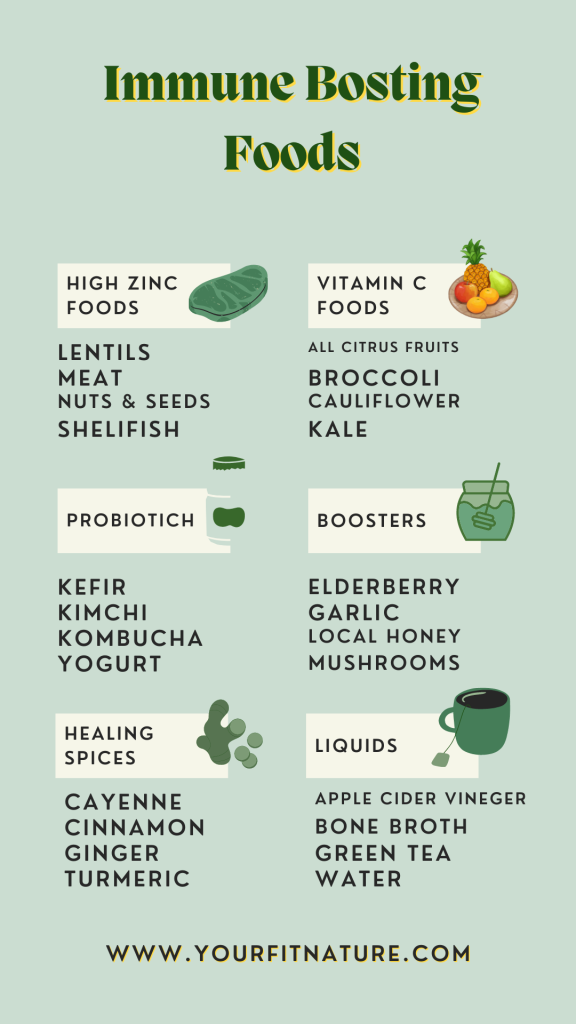
Zinc is Good for the Brain
Zinc is important for brain development and function, but excessive accumulation in the brain can cause symptoms such as lethargy and dizziness. Zinc also acts as a neuromodulator according to studies 27, 28, 29, 30.
Some studies suggest that zinc naturally found in the body can be harmful to the nervous system 31, 32, 33, 34, 35.
However, zinc not only aids in the conduction of neuron signals but is also stored and released from pre-synaptic vesicles of certain neurons, which in turn facilitates the release of glutamate 34, 35, 36, 37.
Zinc is stored in neurons and released when they are activated 38, 39.
It is believed that zinc has a significant role in causing damage to neurons. It is assumed that the neurotoxic effects of zinc are mainly caused by depolarization of the cell membrane, which is also linked to neuronal injury 40.
According to studies, investigating the impact of zinc on expectant mothers may aid in comprehending how the autonomic nervous system of their offspring develops 41.
Skin Benefits of Zinc
The topical application of zinc is popularly used for treating wounds and various skin conditions in dermatology 42, 43, 44.
The benefits of zinc for skin health are numerous, as zinc can be applied topically in the form of zinc oxide to promote healthy skin and treat various skin conditions.
Research has indicated that using zinc products on the skin can safeguard against sunburn during summer and windburn in winter 45.
According to the study, using zinc preparation in a thin layer on a baby's diaper area can help prevent diaper rashes. Additionally, zinc pyrithione is reported to have anti-dandruff properties and is considered an important ingredient in shampoos 46.
It is unclear from the reports whether zinc has any harmful impact on the skin or not.
People absorb zinc differently based on factors like the pH of their skin, the amount of zinc they use, and the type of zinc they use 47, 48.
Antiviral Benefits of Zinc
Several studies have shown that zinc can be effective in treating viral infections. The studies used zinc acetate, which was chosen due to its inability to bind zinc ions, and positive results were observed 49, 50.
The benefits of zinc for immune system function have led to its use as a treatment for AIDS, caused by the human immunodeficiency virus (HIV) 51, 52.
However, the effectiveness of zinc as a therapeutic intervention for acquired immune deficiency syndrome (AIDS) has not been consistently proven 53, 54.
Combining Zinc with interferon-a (IFN-a) has been found to be more effective against chronic hepatitis C compared to therapy with IFN-a alone 49.
There is a belief that zinc could prevent the growth of herpes simplex virus 55 and Rhinoviruses 56.
People with HIV-1 have less zinc alpha-2-glycoprotein in their blood compared to those who are not infected, according to a study 57.
A type of enzyme called Zinc Finger Nuclease (ZFN), which has zinc as its core component has been found to be effective in targeting and removing the complete HIV-1 proviral DNA from infected human cells. Additionally, it has been demonstrated that ZFN-U3 can successfully remove integrated HIV-1 from the genome of infected human cells 58.
Another study looked at the connection between giving zinc supplements to children with HIV-1 and discovered that it did not cause an increase in their plasma viral load 52.
Antibacterial Benefits of Zinc
The importance of zinc in the treatment of bacterial infections has been established by several studies that have found a correlation between zinc levels in the body and such infections. Addressing zinc deficiency can result in better absorption of water and electrolytes by the intestines, quicker regeneration of gut epithelium, and higher levels of erythrocyte brush border enzyme 59, 60.
Moreover, there are plenty of records on how to treat Shigellosis, which is a type of bacterial infection 61, 62.
Zinc is good for leprosy patients, as treatment with zinc has been found to provide benefits for those who have undergone the treatment 63, 64.
Zinc boosts the immune system's ability to fight infections caused by mycobacteria by activating infected macrophages through Type 1T helper cells and IFN-g. Zinc also helps get rid of bacteria by activating macrophages and changing the production of lymphokines 65.
Zinc is Good for Liver
Patients with primary biliary cirrhosis, alcoholic cirrhosis, and active chronic hepatitis showed a decrease in zinc levels in their white blood cells, but not in their red blood cells 72.
People with cirrhosis have difficulty absorbing zinc from their liver and intestines, while those with chronic hepatitis do not have this problem 73.
The liver can experience a lack of zinc not only in severe cases of alcohol-related liver damage but also in milder forms of liver disease 74.
Benefits of Zinc in Diabetes
The benefits of zinc for insulin synthesis, storage, and secretion, as well as maintaining its hexameric form, highlight its crucial role in glucose metabolism and overall metabolic health.
Low zinc levels can hinder the islet of Langerhans cell's ability to produce and secrete insulin, exacerbating the issue in type 2 diabetes 75.
Zinc was given to diabetic rats and its effect on ghrelin production, secretion, and lipid metabolism in the gastrointestinal tract was studied.
The findings indicate that zinc has a shielding impact on different lipid measures, including overall lipids, cholesterol, high-density lipoprotein cholesterol, and the atherogenic index 76.
Obese people have less zinc in their blood and red blood cells, but more zinc in their urine and higher levels of insulin in their blood 77.
Zinc-Rich Foods
High-zinc foods also have lots of protein, but foods that are mostly carbohydrates have less zinc. 66.
Foods that contain zinc, such as meat-based options, provide a substantial amount, ranging from 0.40 to 6.77mg per 100g 67.
Grains contain 0.30 to 2.54 milligrams per 100 grams, while dairy products have 0.36 to 0.49 milligrams per 100 grams. Vegetables have 0.12 to 0.60 milligrams per 100 grams, and fruits have 0.02 to 0.26 milligrams per 100 grams 67.
Oyster, specifically the Ostrea edulis Linnaeus type, contains high amounts of zinc and copper compounds 68.
Red meat, liver, and poultry are all high-zinc foods and can be good sources of nutrients.
You can get extra zinc by eating skimmed milk powder, egg yolk, and Cheddar cheese 69.
Vegetarians who get their protein from pulses instead of meat are more likely to have low levels of zinc 70.
Eating grains, beans, and starchy vegetables like potatoes can make it harder for your body to absorb zinc 71.
However, studies conducted on adults have found no impact of vegetarian diets on the levels of serum zinc 78.
Young vegetarians have the same levels of zinc in their blood as non-vegetarians 79.
The Bottom Line
Zinc is a crucial mineral that plays an essential role in various bodily functions. Zinc-rich foods, such as oysters, beef, and pumpkin seeds, can provide the body with the necessary amount of zinc.
The benefits of zinc are numerous, with zinc playing a key role in supporting immune system function, promoting brain and skin health, aiding liver function, and assisting individuals with diabetes.
By including zinc-rich foods in your diet, you can improve your health and boost your immunity.
Frequently Asked Questions
What are some foods that are high in zinc?
What is the relationship between zinc levels and liver diseases?
What is the connection between zinc and the treatment of AIDS?
What are some symptoms of excessive accumulation of zinc in the brain?
References
Fitnature uses only high-quality sources, including peer-reviewed studies, to support the facts within our articles. Read our editorial process to learn more about how we fact-check and keep our content accurate, reliable, and trustworthy.
- Agren, M. S., L. Franzén, et al. “Effects on Wound Healing of Zinc Oxide in a Hydrocolloid Dressing – PubMed.” Journal of the American Academy of Dermatology, vol. 29, no. 2 Pt 1, Aug. 1993, https://doi.org/10.1016/0190-9622(93)70172-p.
- Agren, M. S., M. Krusell, et al. “Release and Absorption of Zinc from Zinc Oxide and Zinc Sulfate in Open Wounds – PubMed.” Acta Dermato-Venereologica, vol. 71, no. 4, Jan. 1991.
- Ågren, Magnus S. “Percutaneous Absorption of Zinc from Zinc Oxide Applied Topically to Intact Skin in Man.” Dermatology, vol. 180, no. 1, pp. 36–39, https://doi.org/10.1159/000247982. Accessed 25 Apr. 2023.
- Assaf, and Chung. “Release of Endogenous Zn2+ from Brain Tissue during Activity.” Nature, vol. 308, no. 5961, pp. 734–36, https://doi.org/10.1038/308734a0. Accessed 25 Apr. 2023.
- Beyersmann, D. “Homeostasis and Cellular Functions of Zinc.” Materialwissenschaft Und Werkstofftechnik, vol. 33, no. 12, Dec. 2002, pp. 764–69, https://doi.org/10.1002/mawe.200290008.
- Bhowmik, Debjit, et al. “A Potential Medicinal Importance of Zinc in Human Health and Chronic.” Int J Pharm, vol. 1, no. 1, 2010, pp. 05–11.
- Bobat, Raziya, et al. “Safety and Efficacy of Zinc Supplementation for Children with HIV-1 Infection in South Africa: A Randomised Double-Blind Placebo-Controlled Trial – PubMed.” Lancet (London, England), vol. 366, no. 9500, Nov. 2005, https://doi.org/10.1016/S0140-6736(05)67756-2.
- Bode, Johann Christian, et al. “Hepatic Zinc Content in Patients with Various Stages of Alcoholic Liver Disease and in Patients with Chronic Active and Chronic Persistent Hepatitis.” Hepatology, vol. 8, no. 6, pp. 1605–09, https://doi.org/10.1002/hep.1840080622. Accessed 25 Apr. 2023.
- Bolkent, S., et al. “The Effect of Zinc Supplementation on Ghrelin-Immunoreactive Cells and Lipid Parameters in Gastrointestinal Tissue of Streptozotocin-Induced Female Diabetic Rats.” Molecular and Cellular Biochemistry, vol. 286, no. 1–2, pp. 77–85, https://doi.org/10.1007/s11010-005-9095-1. Accessed 25 Apr. 2023.
- Brown, Kenneth H., et al. “The Importance of Zinc in Human Nutrition and Estimation of the Global Prevalence of Zinc Deficiency.” Food and Nutrition Bulletin, vol. 22, no. 2, Jan. 2001, pp. 113–25, https://doi.org/10.1177/156482650102200201.
- Calesnick, B., and AM Dinan. “Zinc Deficiency and Zinc Toxicity.” American Family Physician, vol. 37, no. 4, 1988, p. 267—270.
- Ceperuelo-Mallafré, V., et al. “Zinc Alpha‐2 Glycoprotein Is Implicated in Dyslipidaemia in HIV‐1‐infected Patients Treated with Antiretroviral Drugs.” HIV Medicine, vol. 13, no. 5, pp. 297–303, https://doi.org/10.1111/j.1468-1293.2011.00976.x. Accessed 25 Apr. 2023.
- Chandel, Girish, et al. “Detection of Genomic Changes in Transgenic Bt Rice Populations through Genetic Fingerprinting Using Amplified Fragment Length Polymorphism (AFLP) – PubMed.” GM Crops, vol. 1, no. 5, Dec. 2010, https://doi.org/10.4161/gmcr.1.5.14764.
- Chausmer, A. B. “Zinc, Insulin and Diabetes – PubMed.” Journal of the American College of Nutrition, vol. 17, no. 2, Apr. 1998, https://doi.org/10.1080/07315724.1998.10718735.
- Cho, Jin Ho, et al. “Effects of Dietary Supplementation of Modified Zinc Oxide on Growth Performance, Nutrient Digestibility, Blood Profiles, Fecal Microbial Shedding and Fecal Score in Weanling Pigs.” Animal Science Journal, vol. 86, no. 6, pp. 617–23, https://doi.org/10.1111/asj.12329. Accessed 25 Apr. 2023.
- Choi, D. W., et al. “Zinc Neurotoxicity in Cortical Cell Culture – PubMed.” Neuroscience, vol. 24, no. 1, Jan. 1988, https://doi.org/10.1016/0306-4522(88)90312-0.
- Colvin, Robert A., et al. “Zn2+ Transporters and Zn2+ Homeostasis in Neurons.” European Journal of Pharmacology, vol. 479, no. 1–3, Oct. 2003, pp. 171–85, https://doi.org/10.1016/j.ejphar.2003.08.067.
- Coombs. “The Nature of Zinc and Copper Complexes in the Oyster Ostrea Edulis.” Marine Biology, vol. 28, no. 1, pp. 1–10, https://doi.org/10.1007/BF00389111. Accessed 25 Apr. 2023.
- Coovadia, Hoosen M., and Raziya Bobat. “Zinc Deficiency and Supplementation in HIV/AIDS.” Nutrition Research, vol. 22, no. 1–2, Jan. 2002, pp. 179–91, https://doi.org/10.1016/s0271-5317(01)00386-4.
- Cousins, Robert J. “A Role of Zinc in the Regulation of Gene Expression.” Proceedings of the Nutrition Society, vol. 57, no. 2, pp. 307–11, https://doi.org/10.1079/PNS19980045. Accessed 25 Apr. 2023.
- Cuajungco, M. P., and G. J. Lees. “Zinc and Alzheimer’s Disease: Is There a Direct Link? – PubMed.” Brain Research. Brain Research Reviews, vol. 23, no. 3, Apr. 1997, https://doi.org/10.1016/s0165-0173(97)00002-7.
- —. “Zinc Metabolism in the Brain: Relevance to Human Neurodegenerative Disorders – PubMed.” Neurobiology of Disease, vol. 4, no. 3–4, Jan. 1997, https://doi.org/10.1006/nbdi.1997.0163.
- DN, Marreiro, et al. “Zinc Nutritional Status and Its Relationships with Hyperinsulinemia in Obese Children and Adolescents. – Abstract – Europe PMC.” Biological Trace Element Research, vol. 100, no. 2, pp. 137–49, https://doi.org/10.1385/bter:100:2:137. Accessed 25 Apr. 2023.
- Duncan, MW, et al. “Zinc, a Neurotoxin to Cultured Neurons, Contaminates Cycad Flour Prepared by Traditional Guamanian Methods.” Journal of Neuroscience, vol. 12, no. 4, Apr. 1992, pp. 1523–37, https://doi.org/10.1523/JNEUROSCI.12-04-01523.1992.
- Eby, George A. “Zinc Lozenges: Cold Cure or Candy? Solution Chemistry Determinations.” Bioscience Reports, vol. 24, no. 1, Feb. 2004, pp. 23–39, https://doi.org/10.1023/b:bire.0000037754.71063.41.
- Eby, George A., 3rd. “Zinc Lozenges as Cure for the Common Cold–a Review and Hypothesis.” Medical Hypotheses, vol. 74, no. 3, Mar. 2010, pp. 482–92, https://doi.org/10.1016/j.mehy.2009.10.017.
- Emsley, John. Nature’s Building Blocks: An A-Z Guide to the Elements. Oxford University Press, USA, 2011.
- Erdman, John W., Jr., et al. Present Knowledge in Nutrition. John Wiley & Sons, 2012.
- Fawzi, Wafaie W., et al. “Trial of Zinc Supplements in Relation to Pregnancy Outcomes, Hematologic Indicators, and T Cell Counts among HIV-1-Infected Women in Tanzania – PubMed.” The American Journal of Clinical Nutrition, vol. 81, no. 1, Jan. 2005, https://doi.org/10.1093/ajcn/81.1.161.
- Foster, Meika, and Samir Samman. “Zinc and Regulation of Inflammatory Cytokines: Implications for Cardiometabolic Disease.” Nutrients, vol. 4, no. 7, July 2012, pp. 676–94, https://doi.org/10.3390/nu4070676.
- Fraker, Pamela J., et al. “Regeneration of T-Cell Helper Function in Zinc-Deficient Adult Mice.” Proceedings of the National Academy of Sciences, vol. 75, no. 11, Nov. 1978, pp. 5660–64, https://doi.org/10.1073/pnas.75.11.5660.
- Frederickson, et al. “The Neurobiology of Zinc in Health and Disease.” Nature Reviews Neuroscience, vol. 6, no. 6, May 2005, pp. 449–62, https://doi.org/10.1038/nrn1671.
- Frederickson, C J, et al. “Importance of Zinc in the Central Nervous System: The Zinc-Containing Neuron – PubMed.” The Journal of Nutrition, vol. 130, no. 5S Suppl, May 2000, https://doi.org/10.1093/jn/130.5.1471S.
- —. “Neurobiology of Zinc and Zinc-Containing Neurons – PubMed.” International Review of Neurobiology, vol. 31, Jan. 1989, https://doi.org/10.1016/s0074-7742(08)60279-2.
- Frederickson, Christopher J., et al. “Cytoarchitectonic Distribution of Zinc in the Hippocampus of Man and the Rat.” Brain Research, vol. 273, no. 2, Aug. 1983, pp. 335–39, https://doi.org/10.1016/0006-8993(83)90858-2.
- Frost, P., et al. “Cell-Mediated Cytotoxicity and Tumor Growth in Zinc-Deficient Mice.” Experimental Biology and Medicine, vol. 167, no. 3, July 1981, pp. 333–37, https://doi.org/10.3181/00379727-167-41174.
- George, J., et al. “Serum Zinc/Copper Ratio in Subtypes of Leprosy and Effect of Oral Zinc Therapy on Reactional States – PubMed.” International Journal of Leprosy and Other Mycobacterial Diseases : Official Organ of the International Leprosy Association, vol. 59, no. 1, Mar. 1991.
- Ghishan, F. K. “Transport of Electrolytes, Water, and Glucose in Zinc Deficiency – PubMed.” Journal of Pediatric Gastroenterology and Nutrition, vol. 3, no. 4, Sept. 1984, https://doi.org/10.1097/00005176-198409000-00022.
- Gibson, Rosalind S., et al. “Is Iron and Zinc Nutrition a Concern for Vegetarian Infants and Young Children in Industrialized Countries? – PubMed.” The American Journal of Clinical Nutrition, vol. 100 Suppl 1, July 2014, https://doi.org/10.3945/ajcn.113.071241.
- Haeflein, K. A., and A. I. Rasmussen. “Zinc Content of Selected Foods – PubMed.” Journal of the American Dietetic Association, vol. 70, no. 6, June 1977.
- Hoffman, Robert S., et al. Goldfrank’s Toxicologic Emergencies, Eleventh Edition. McGraw-Hill Education / Medical, 2019.
- Hunt, J. R., et al. “Zinc Absorption, Mineral Balance, and Blood Lipids in Women Consuming Controlled Lactoovovegetarian and Omnivorous Diets for 8 Wk – PubMed.” The American Journal of Clinical Nutrition, vol. 67, no. 3, Mar. 1998, https://doi.org/10.1093/ajcn/67.3.421.
- Hunt, Janet R. “Bioavailability of Iron, Zinc, and Other Trace Minerals from Vegetarian Diets – PubMed.” The American Journal of Clinical Nutrition, vol. 78, no. 3 Suppl, Sept. 2003, https://doi.org/10.1093/ajcn/78.3.633S.
- Kambe, Taiho, et al. “The Physiological, Biochemical, and Molecular Roles of Zinc Transporters in Zinc Homeostasis and Metabolism – PubMed.” Physiological Reviews, vol. 95, no. 3, July 2015, https://doi.org/10.1152/physrev.00035.2014.
- Keeling, P. W., et al. “Reduced Leucocyte Zinc in Liver Disease.” Gut, vol. 21, no. 7, July 1980, pp. 561–64, https://doi.org/10.1136/gut.21.7.561.
- KORANT, et al. “Zinc Ions Inhibit Replication of Rhinoviruses.” Nature, vol. 248, no. 5449, pp. 588–90, https://doi.org/10.1038/248588a0. Accessed 25 Apr. 2023.
- Kümel, Gunther, et al. “The Mechanism of the Antiherpetic Activity of Zinc Sulphate.” Journal of General Virology, vol. 71, no. 12, Dec. 1990, pp. 2989–97, https://doi.org/10.1099/0022-1317-71-12-2989.
- LANSDOWN, A. B. G. “Influence of Zinc Oxide in the Closure of Open Skin Wounds.” International Journal of Cosmetic Science, vol. 15, no. 2, pp. 83–85, https://doi.org/10.1111/j.1467-2494.1993.tb00072.x. Accessed 25 Apr. 2023.
- Lu, Hao, et al. “Optimal Dose of Zinc Supplementation for Preventing Aluminum-Induced Neurotoxicity in Rats.” Neural Regeneration Research, vol. 8, no. 29, Oct. 2013, pp. 2754–62, https://doi.org/10.3969/j.issn.1673-5374.2013.29.007.
- Maret, Wolfgang, and Harold H. Sandstead. “Zinc Requirements and the Risks and Benefits of Zinc Supplementation – PubMed.” Journal of Trace Elements in Medicine and Biology : Organ of the Society for Minerals and Trace Elements (GMS), vol. 20, no. 1, Jan. 2006, https://doi.org/10.1016/j.jtemb.2006.01.006.
- MARKS, et al. “The Effects of a Shampoo Containing Zinc Pyrithione on the Control of Dandruff.” British Journal of Dermatology, vol. 112, no. 4, Apr. 1985, pp. 415–22, https://doi.org/10.1111/j.1365-2133.1985.tb02314.x.
- Mathur, N. K., et al. “Oral Zinc in Recurrent Erythema Nodosum Leprosum Reaction – PubMed.” Leprosy in India, vol. 55, no. 3, July 1983.
- Murphy, E. W., et al. “Provisional Tables on the Zinc Content of Foods – PubMed.” Journal of the American Dietetic Association, vol. 66, no. 4, Apr. 1975.
- Osis, et al. “Dietary Zinc Intake in Man.” Am. J. Clin. Nutr.; (United States), vol. 25, June 1972.
- Overbeck, et al. “Modulating the Immune Response by Oral Zinc Supplementation: A Single Approach for Multiple Diseases.” Archivum Immunologiae et Therapiae Experimentalis, vol. 56, no. 1, Feb. 2008, pp. 15–30, https://doi.org/10.1007/s00005-008-0003-8.
- —. “Modulating the Immune Response by Oral Zinc Supplementation: A Single Approach for Multiple Diseases.” Archivum Immunologiae et Therapiae Experimentalis, vol. 56, no. 1, Feb. 2008, pp. 15–30, https://doi.org/10.1007/s00005-008-0003-8.
- Prasad, Ananda S. “Clinical, Immunological, Anti-Inflammatory and Antioxidant Roles of Zinc.” Experimental Gerontology, vol. 43, no. 5, May 2008, pp. 370–77, https://doi.org/10.1016/j.exger.2007.10.013.
- Prasad, Ananda S. “Zinc: Role in Immunity, Oxidative Stress and Chronic Inflammation.” Current Opinion in Clinical Nutrition and Metabolic Care, vol. 12, no. 6, Nov. 2009, pp. 646–52, https://doi.org/10.1097/mco.0b013e3283312956.
- —. “Zinc Supplementation Decreases Incidence of Infections in the Elderly: Effect of Zinc on Generation of Cytokines and Oxidative Stress.” The American Journal of Clinical Nutrition, vol. 85, no. 3, Mar. 2007, pp. 837–44, https://doi.org/10.1093/ajcn/85.3.837.
- PW, Keeling, et al. “Direct Measurement of the Hepatointestinal Extraction of Zinc in Cirrhosis and Hepatitis. – Abstract – Europe PMC.” Clinical Science (London, England : 1979), vol. 61, no. 4, pp. 441–44, https://doi.org/10.1042/cs0610441. Accessed 25 Apr. 2023.
- Qu, et al. “Zinc Finger Nuclease: A New Approach for Excising HIV-1 Proviral DNA from Infected Human T Cells.” Molecular Biology Reports, vol. 41, no. 9, June 2014, pp. 5819–27, https://doi.org/10.1007/s11033-014-3456-3.
- Rahman, Muhammad J., et al. “Effects of Zinc Supplementation as Adjunct Therapy on the Systemic Immune Responses in Shigellosis – PubMed.” The American Journal of Clinical Nutrition, vol. 81, no. 2, Feb. 2005, https://doi.org/10.1093/ajcn.81.2.495.
- Raqib, Rubhana, et al. “Effect of Zinc Supplementation on Immune and Inflammatory Responses in Pediatric Patients with Shigellosis – PubMed.” The American Journal of Clinical Nutrition, vol. 79, no. 3, Mar. 2004, https://doi.org/10.1093/ajcn/79.3.444.
- Rink, Lothar. “Zinc and the Immune System.” Proceedings of the Nutrition Society, vol. 59, no. 4, 2000, pp. 541–52.
- Sanna, Alessandro, et al. “Zinc Status and Autoimmunity: A Systematic Review and Meta-Analysis.” Nutrients, vol. 10, no. 1, Jan. 2018, p. 68, https://doi.org/10.3390/nu10010068.
- Shankar, Anuraj H., and Ananda S. Prasad. “Zinc and Immune Function: The Biological Basis of Altered Resistance to Infection.” The American Journal of Clinical Nutrition, vol. 68, no. 2, Aug. 1998, pp. 447S-463S, https://doi.org/10.1093/ajcn/68.2.447s.
- Spann, Marisa N., et al. “Deficient Maternal Zinc Intake-but Not Folate-Is Associated with Lower Fetal Heart Rate Variability.” Early Human Development, vol. 91, no. 3, Mar. 2015, pp. 169–72, https://doi.org/10.1016/j.earlhumdev.2015.01.007.
- Stefanidou, M., et al. “Zinc: A Multipurpose Trace Element.” Archives of Toxicology, vol. 80, no. 1, Sept. 2005, pp. 1–9, https://doi.org/10.1007/s00204-005-0009-5.
- STRÖMBERG, and ÅGREN. “Topical Zinc Oxide Treatment Improves Arterial and Venous Leg Ulcers.” British Journal of Dermatology, vol. 111, no. 4, Oct. 1984, pp. 461–68, https://doi.org/10.1111/j.1365-2133.1984.tb06610.x.
- Takeda, A. “Movement of Zinc and Its Functional Significance in the Brain.” Brain Research Reviews, vol. 34, no. 3, Dec. 2000, pp. 137–48, https://doi.org/10.1016/s0165-0173(00)00044-8.
- Umeta, Melaku, et al. “Content of Zinc, Iron, Calcium and Their Absorption Inhibitors in Foods Commonly Consumed in Ethiopia.” Journal of Food Composition and Analysis, vol. 18, no. 8, Dec. 2005, pp. 803–17, https://doi.org/10.1016/j.jfca.2004.09.008.
- VALLEE, B. L. “Biochemistry, Physiology and Pathology of Zinc – PubMed.” Physiological Reviews, vol. 39, no. 3, July 1959, https://doi.org/10.1152/physrev.1959.39.3.443.
- Vasák, M., and D. W. Hasler. “Metallothioneins: New Functional and Structural Insights – PubMed.” Current Opinion in Chemical Biology, vol. 4, no. 2, Apr. 2000, https://doi.org/10.1016/s1367-5931(00)00082-x.
- Vogt, K., et al. “The Actions of Synaptically Released Zinc at Hippocampal Mossy Fiber Synapses – PubMed.” Neuron, vol. 26, no. 1, Apr. 2000, https://doi.org/10.1016/s0896-6273(00)81149-6.
- Wessels, Inga, et al. “Zinc as a Gatekeeper of Immune Function.” Nutrients, vol. 9, no. 12, Nov. 2017, p. 1286, https://doi.org/10.3390/nu9121286.
- Wuehler, Sara E., et al. “Use of National Food Balance Data to Estimate the Adequacy of Zinc in National Food Supplies: Methodology and Regional Estimates – PubMed.” Public Health Nutrition, vol. 8, no. 7, Oct. 2005, https://doi.org/10.1079/phn2005724.
- Zazzo, J. F., et al. “Effect of Zinc on the Immune Status of Zinc-Depleted AIDS Related Complex Patients – PubMed.” Clinical Nutrition (Edinburgh, Scotland), vol. 8, no. 5, Oct. 1989, https://doi.org/10.1016/0261-5614(89)90036-8.
Review date not set.
How we reviewed this article:
Latest on:
